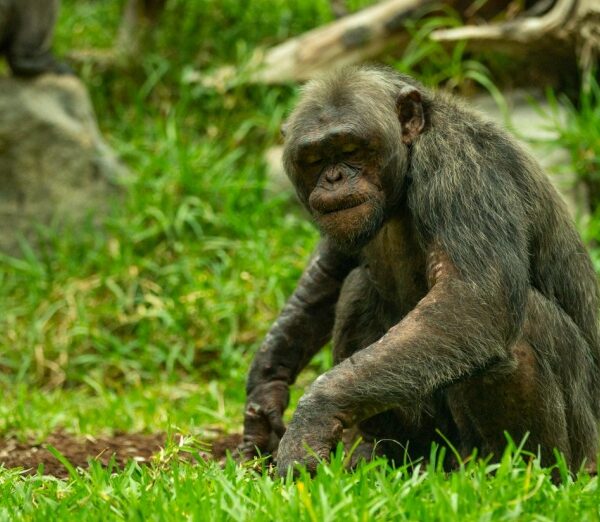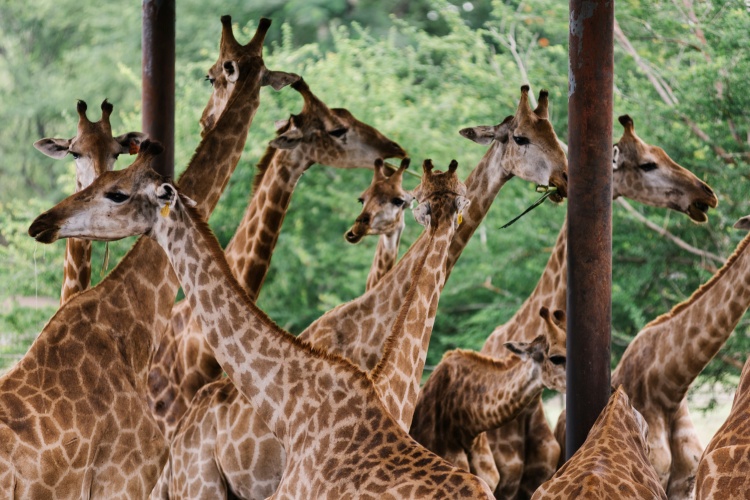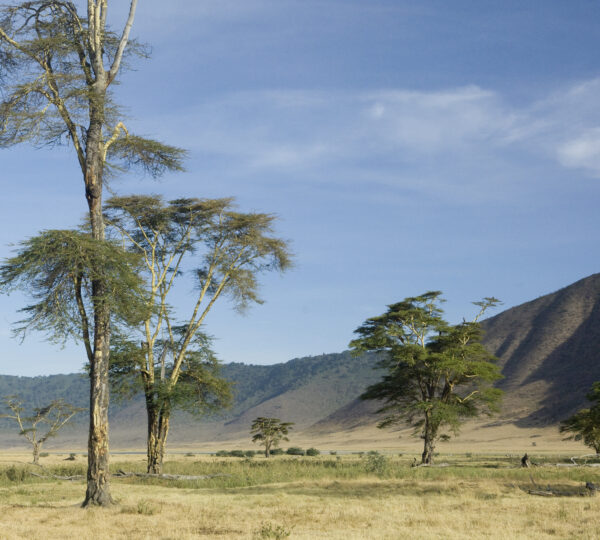
Gombe National Park
Gombe National Park is a verdant haven renowned for its exceptional chimpanzee tracking experiences.The chimpanzee population in Gombe continues to be the focus of the world’s most extensive study of
Home » Arusha National Park

Arusha National Park, situated in the northeastern region of Tanzania, encompasses the towering Mount Meru, a prominent volcano soaring to 4566 meters above sea level. Despite its relatively small size, the park boasts diverse and breathtaking landscapes across three distinct zones. To the west, the Meru Crater channels the Jekukumia River, with the summit of Mount Meru resting upon its rim. In the southeastern region lies the expansive grasslands of Ngurdoto Crater. In the northeast, the shallow alkaline Momella Lakes exhibit an array of mesmerizing algal hues and are renowned for hosting various species of wading birds.
Mount Meru, the park’s focal point, stands as the second highest peak in Tanzania, overshadowed only by Mount Kilimanjaro, which looms just 60 kilometers away, providing a stunning backdrop to the eastern vistas of the park. Arusha National Park occupies a pivotal position along a 300-kilometer stretch encompassing some of Africa’s most renowned national parks, extending from Serengeti and Ngorongoro Crater in the west to Kilimanjaro National Park in the east.
Conveniently located a few kilometers northeast of Arusha city, the park’s main entrance lies 25 kilometers east of the urban center. Additionally, it is positioned 58 kilometers from Moshi and 35 kilometers from Kilimanjaro International Airport (KIA).
While Arusha National Park boasts a diverse array of wildlife, visitors should temper their expectations for traditional game-viewing experiences typical of Tanzania’s northern circuit. Despite its compact size, the park is home to a plethora of animals including giraffes, Cape buffaloes, zebras, warthogs, black-and-white colobus monkeys, blue monkeys, flamingos, elephants, bushbucks, and various other African species. Although leopards inhabit the area, sightings are infrequent. The forest teems with prolific birdlife, offering birdwatchers the chance to spot species such as the Narina trogon and bar-tailed trogon, which are rare finds elsewhere along the tourist route. Additionally, the diverse range of starling species adds further allure to the avian experience, albeit in a less flamboyant manner.
2. MOUNT MERU
Mount Meru, a dormant stratovolcano, sits approximately 70 kilometers (43 miles) west of Kilimanjaro within the southeastern Arusha Region of Tanzania. Standing at an impressive height of 4,562.13 meters (14,968 feet), it offers a striking sight, visible from Mount Kilimanjaro on clear days. Depending on the criteria used for measurement, it ranks as the fifth-highest peak in Africa.
Positioned just north of Arusha city within the Arusha Region, Mount Meru claims the title of Tanzania’s second-highest mountain, following Mount Kilimanjaro. Additionally, it stands as the tallest peak within the Arusha Region. The ascent of Mount Meru typically begins at the Momella gate, situated on the mountain’s eastern flank, along the Momella route.
Characterized by alkaline lavas, notably nephelinite, Mount Meru bears evidence of past volcanic activity, with a significant summit collapse occurring around 7,800 years ago. The most recent minor eruption dates back to 1910. Various small cones and craters dot the landscape, reflecting multiple volcanic episodes. The caldera of Mount Meru spans 2.2 miles (3.5 kilometers) in width.
Within Arusha National Park, Mount Meru serves as a prominent geographical feature. Its fertile slopes rise above the surrounding savanna, adorned with forests that harbor a rich diversity of wildlife. This ecosystem supports nearly 400 species of birds, as well as populations of monkeys and leopards.
3. BIRDS
For any bird-watcher exploring Tanzania, Arusha National Park is a must-visit destination. With a remarkable tally of over 400 species documented within its compact boundaries, the park offers an impressive array of avian life. The Momella Lakes particularly stand out as prime habitats for waterbirds, where sightings of flamingos, pelicans, little grebes, and various herons and ducks are abundant. Above Ngurdoto Crater, keep an eye out for Augur buzzards, Verreaux’s eagles, and other raptors often soaring through the skies. Additionally, migratory birds grace the park’s landscapes from November to April, adding further allure to the bird-watching experience.
GETTING THERE
Arusha National Park is only a 45-minute* drive from the town of Arusha, the starting point of any safari in northern Tanzania.
There are several ways to get to Arusha. The easiest is to get a direct flight to Kilimanjaro International Airport (JRO), which is situated about 50km/31mi from Arusha. The drive from the airport to Arusha takes about 1½ hours*. Alternatively, you can fly to Julius Nyerere International Airport (DAR) in Dar es Salaam and get a connecting domestic flight to Arusha Airport (ARK) or Kilimanjaro International Airport (JRO).
In most cases, your tour operator will pick you up from the airport and take care of further transportation.

Gombe National Park is a verdant haven renowned for its exceptional chimpanzee tracking experiences.The chimpanzee population in Gombe continues to be the focus of the world’s most extensive study of

Discover the renowned Lake Manyara National Park, famed for its iconic tree-climbing lions, the mesmerizing soda ash lake drawing in flocks of pink flamingos, and boasting one of Tanzania’s largest

Kilimanjaro National Park, in the East African country of Tanzania, is home to the continent’s highest mountain, snowcapped Mt. Kilimanjaro.

Tarangire National Park portal is a non-commercial with all information from wildlife, attractions, Tarangire activities, to safari accommodation, when to go, how to get there, Tarangire Safaris & Tours, Cost

Serengeti National Park, in northern Tanzania, is known for its massive annual migration of wildebeest and zebra. Seeking new pasture, the herds move north from their breeding grounds in the